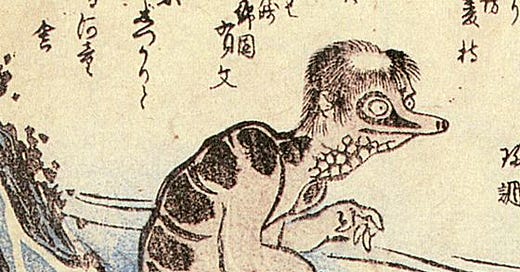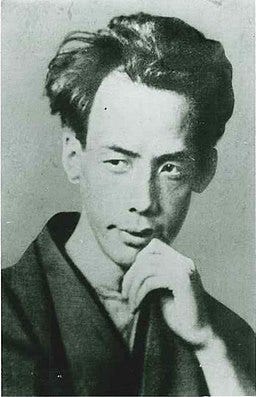Inspiration can come in unexpected ways. That is the case for my post for The Silent Sod this week, and I have to admit with the beginning of October it is good timing for a spooky post.
Last Friday, I was getting to about half an hour before my workweek for my remote job was coming to an end. Storms were developing in the wake of the hurricane in Florida, and I suddenly heard a loud pop and all of the power went out. I managed to get the work completed through my cell phone, but then the night became not as relaxing as I had hoped since we had to deal with being in darkness with no internet to have anything to do or watch. On top of this, it slipped our minds that garage openers don’t work without electric, so we had to spend over an hour obtaining a spare key, and by the time we got home, our dinner we had picked up was cold with no way to heat it up.
I sat there in the candlelit darkness thinking, how can I salvage this night? Then, it suddenly dawned on me that a few months ago we bought a small book with what looked like a scary story with an unusual image on the front cover. The picture was a strange looking green creature hugging what looks like a cucumber. Reminiscent of telling stories around the fire on camping trips, I proceeded to read the 82 page book out loud for entertainment.
Kappa
The fictional novel called Kappa is written by a Japanese author Ryunosuke Akutagawa, and the story is told by a patient in a mental hospital, Patient No. 23. Patient No. 23 is hiking his way up Mount Hotaka in Kamikachi, Japan when he suddenly sees the face of a creature he calls a kappa that is described as able to change colors depending on his background. I said, “oh this must be some sort of reptile,” and we proceeded to use what little battery we had on our cell phone to determine that kappas are mythological creatures in Japanese folklore that are green, humanlike beings with webbed feet with turtle like shells on their back and a dish on their head where they retain water. And apparently they enjoy cucumbers, hence the image on the front of the book.
Patient No. 23 chases the kappa and similar to Alice in Wonderland is pulled into the world of kappas where he gets to know different individuals including a fisherman, a doctor, a factory owner, a judge, a musician, a poet, and a philosopher. Some of the narrative is humorous, and some of it is very dark. At one point, the kappas explain that at birth the father yells up to the baby in the mother’s womb to ask the baby if it wants to live or not, and the baby kappa then decides if it wants to come out or disappear.
At a later point in the book, the poet named Tok commits suicide due to some angst around his work. I initially found this somewhat horrifying because as I am reading in the dim light I discover from the cover of the book that this author himself ended his own life shortly after writing the story at the age of thirty-five. I recently read the Japanese series Ringu in which people watch a video and perish shortly afterward, so the thought came to my mind, “what if this is some weird cursed story that will make the reader go mad themselves after reading it?” Then my rational mind kicked back in, and I vowed that once I had light and internet I would learn more about the story of the author and share it on The Silent Sod this week.
Ryunosuke Akutagawa
Ryunosuke Akutagawa was born in Tokyo in 1892 to a businessman who owned a milk producing business and a mother who suffered from mental health issues. Due to his mother’s incapacity, he was raised by an aunt. He wrote hundreds of short stories over his life and became known as “the father of Japanese story.” There is a prestigious literary award in Japan called the Akutagawa Award, which is named after him. I wondered what factored into his mental state at the time of his death at the age of thirty-five in 1927, shortly after writing this entertaining short story.
One element that played a part at that time and apparently throughout his life was a fear that he would inherit his mother’s mental health condition. Apparently that fear would drive him into very negative spirals of depression, and by the time of his death, he was suffering from auditory and visual hallucinations.
Another contributing component was that he lived through an earthquake that occurred in Japan in 1923 where much of Tokyo was destroyed and over 100,000 people were killed. Apparently Akutagawa suffered from the trauma of surviving this catastrophe as well as guilt over affairs he had had in his marriage. Between the uncertainty he felt between his mental health and the elements of nature, he had developed a negative perception that nothing in his life would have any permanence and therefore sunk into an emotional black hole.
He had made a vow shortly before the end of his life that he would be dead within six months. During the time that his mental health deteriorated, he was able to create some masterpiece stories, including the one I found myself reading by candlelight. There is one part of the story, a seance with Tok, the poet who committed suicide, which I found reflective of the life of the author:
Q: What is life like as a ghost?
A: No different than yours.
Q: Don’t ghosts live forever?
A: You shouldn’t believe just any old thing you hear about us. Don’t forget that, luckily, there are Christians, Buddhists, Muslims, Zoroastrians, and many other religious adherents among us.
Q: Your collected works were published, but sales weren’t brisk.
A: I’m sure that everyone will buy my collected work in three hundred years–that is, once the copyright has expired. How is the lady kappa who used to live with me?
Apparently, there had been some controversy around copyright in the works of Akutagawa, and as a result, sales were poor while he was alive, so perhaps this was something that contributed to his demise. It seems that his real life struggles were channeled into the fictional narrative of the kappas. I imagine that the different kappa characters in the book were likely the various aspects of his personality that he was struggling with at the time.
It was eerie to read this story reflecting human impermanence at a time when I was affected by a small part of a natural disaster that highlighted this in our own country. I am not sure if it was because of the ambience in which I read his story, but I did find myself unable to put it down. I think in the future I will read more of his works, and maybe I will do so in the candlelight, whether the power is out or not!
Do you have any fun or spooky memories of telling stories around a campfire or by candlelight?
Sources:
https://en.wikipedia.org/wiki/Kappa_(folklore)
https://en.wikipedia.org/wiki/Ry%C5%ABnosuke_Akutagawa
https://www.theguardian.com/books/2007/sep/08/featuresreviews.guardianreview13
Kappa. Ryūnosuke Akutagawa. Originally published 1927. Republished June 6, 2023. New Directions.








I enjoyed reading the novella Kappa and this was a fun piece to write. I hope to read more by him in the future. I have been reading a few modern Japanese fiction books and it will be nice to read more from different eras. Enjoy!